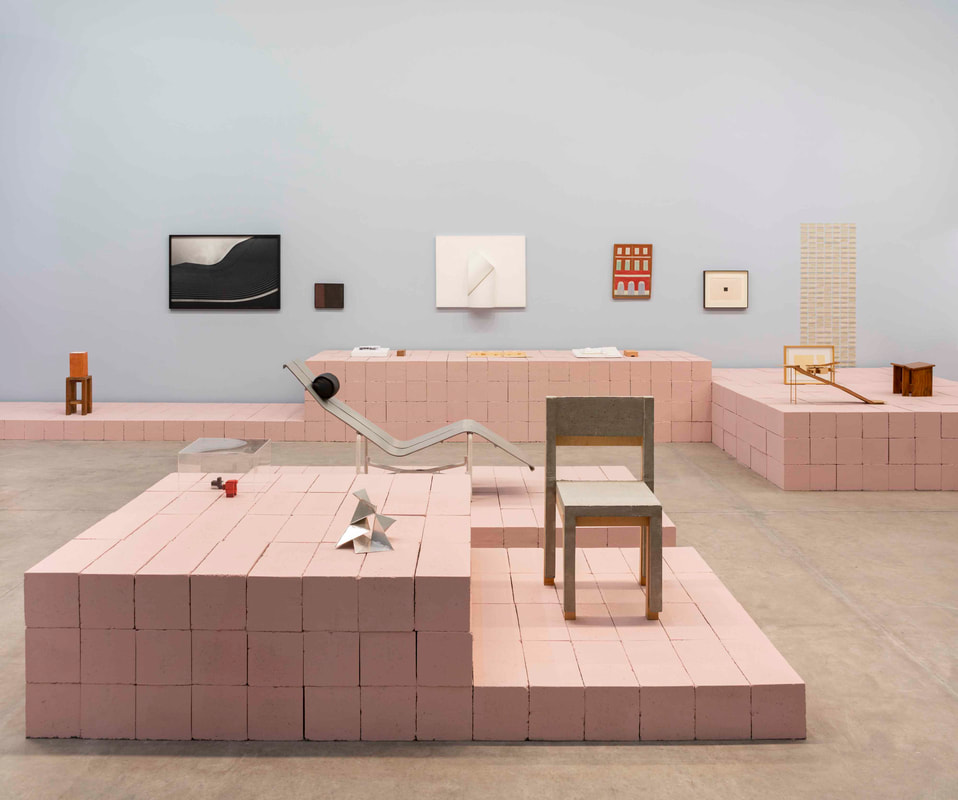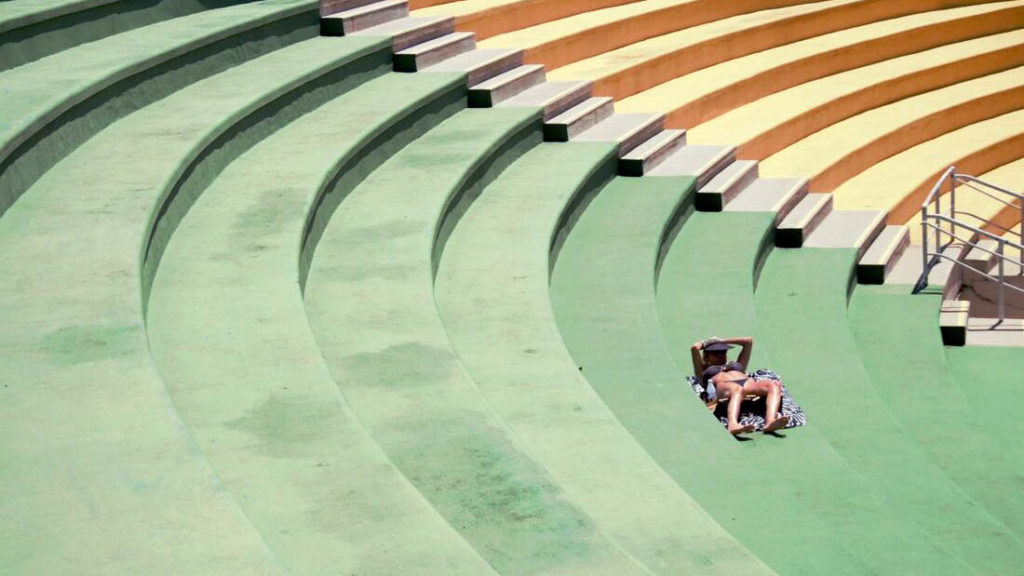
On the day she was supposed to be addressing the Harvard Graduate School of Design as part of the Spring 2020 program, the Mexican-born, São Paulo–based architect and urban designer Sol Camacho instead found herself talking to us via an international call from her home while in lockdown. As an expert in cultural and social development in urban contexts—and the founder of RADDAR, an architecture firm in São Paulo—much of her work is focused on the conception and design of public spaces and our responses to them. Which begs the question: What will our reaction be as communities when we come out of isolation?
“My husband says I get excited every time I hear the words ‘public space.’ Much of my work is about being aware that we had that space—that these spaces mattered,” Camacho says. “I feel how much of a protagonist public space is in this moment we’re going through. But right now, it has been made completely obsolete, devoid of its meaning… what is it going to be after this?”

With her ethos of “design as research and research as a design,” Camacho is taking advantage of the current global pause for some much-needed research time. “With research as design, I always say it’s a way of thinking,” she explains. “It’s also a way to keep you busy with something while you find a project. So it’s a way of thinking but also a way of surviving as an architect in Latin America, which is quite a complex place to be working in. So when we’re not building buildings, then we turn to research in some way.”
For example, Camacho talks of “going into cycles of looking at subjects that I’m really interested in”—such as Oscar Niemeyer’s famous Edifício Copan in São Paulo—which often develop into new design projects. “Because you’re getting so much leverage in terms of information, you end up being… not an expert, but at least someone who’s knowledgeable about the context. And in the meantime we end up with a project!”
It is this nuanced, hard-to-define role of the architect-designer that is key to Camacho’s philosophy. “I was going to open my GSD presentation with an image of Philippe Petit, the French guy who walked between the Twin Towers,” she says. “Because there’s so much besides design that is involved in being a designer—there are so many pushes and pulls from other forces that it’s almost like an act of balance. More and more I’m aware of how much stronger your voice needs to be so that design has some space within the process.”
This delicate balancing act was best evinced in Camacho’s role as co-curator of Walls of Air—the Brazilian Pavilion at the 16th Venice Architecture Biennale in 2018. Along with Laura González Fierro, Gabriel Kozlowski, and Marcelo Maia Rosa, Camacho explored the concept of visible and invisible walls, examining the flow of people and materials on a global scale and raising political and environmental questions as well as considering “the dilution of barriers through cultural assimilation.”
Camacho remarks that the honor of representing Brazil at the Venice Architecture Biennale tends to fall “mostly to a renowned older man.” So the fact that four younger architects (“not as well-known as the previous ones—[a mix of] men, women, foreigners, Brazilians”) were chosen for 2018 was a refreshing shift in emphasis. “There must have been someone on the board who insisted on having younger people,” she suggests. Frustrated by the predictable presentations of previous years, Camacho and her fellow creators decided on a typically bold approach. “We said, this isn’t just about showing our pictures, it’s a platform and an opportunity for research. There’s really no market like there is for the art biennale—there are no collectors, gallerists, or curators in the same sense. So it was a perfect moment for the country to stop and think about the things that surround our environment.”
Camacho thinks a lot about how we shape our environment, and how it shapes us. She was cultural director for architect Lina Bo Bardi’s iconic Casa de Vidro (Glass House), and she shares much of the late designer’s passions and inspirations. Born in Rome before moving to São Paulo in her early 30s shortly after World War II, Bo Bardi combined her modernist approach with a fascination for Brazilian vernacular and the integration of nature. Camacho speaks with enthusiasm about how Casa de Vidro’s garden is central to its design. “It wasn’t a designed project, it was more done by feeling,” she explains. “The idea of landscape was so present in Bo Bardo’s projects. There are so many things that are almost infrastructural in her landscapes—incorporating water and anticipating the green movement. She had some sort of understanding of the ideas of sustainable architecture that we have now.”
Camacho takes this as a prime insight for her own work. “It’s so obvious to me that São Paulo could have a complete, natural infrastructure in terms of landscape incorporated into the urban landscape.” She cites a current project reviving the famous Pacaembu Stadium, built in the 1940s, which sits in the basin of a tributary of the Pinheiros River. “Literally, we are on top of the river. I wanted to speak to someone about how we can incorporate it—in a city that is so inundated with rivers—and I realized that there are no landscape architects in Brazil. This is the land of Burle Marx, right? But there’s no formal education about it in Brazil. That told me so much. There’s no understanding of the importance of this. The urban landscape is still landscape!”

Unfortunately, just as Camacho was engaging with local swimming clubs to make a river-based pool central to the project, the Pacaembu was repurposed to treat COVID-19 patients. And trying to plan for a post-lockdown world is proving something of a challenge. “What’s funny is that when we were going to photograph the project—we were starting photography on March 16—the first thing that got closed were the swimming pools,” she says. “Those landscapes we’re discussing—the swimming pools and the parks—are completely collective, there’s no social distancing. We don’t know when we will be allowed to go back to take photos. September maybe. Will there be new rules? Will they be so crowded? And will our artificial landscapes be changed? I’m quite curious: actually maybe it will turn out to have been a good moment to take a look.”
But as for her Walls of Air theories on the dilution of barriers and boundaries, Camacho is less optimistic. “Only a month ago, a group of female Mexican architects—including Tatiana Bilbao, Frida Escobedo, Rozana Montiel, Loreta Castro, Gabriela Carrillo, and myself—were together in Oaxaca for an event, talking about the profession and gender and everything. It was such a great event. But it feels like a completely different world. We were talking a lot about how we can really get engaged in projects that can help erase boundaries, whether it’s a research project or live design projects. And then comes all of this. It feels like there’s now an excuse for the boundaries to happen. I don’t think it’s positive, because now, whether it is politically enforced, from social practice, or for medical reasons—it’s like, ‘OK, now we really need to get separated.’ I’m afraid it’s a huge setback.”